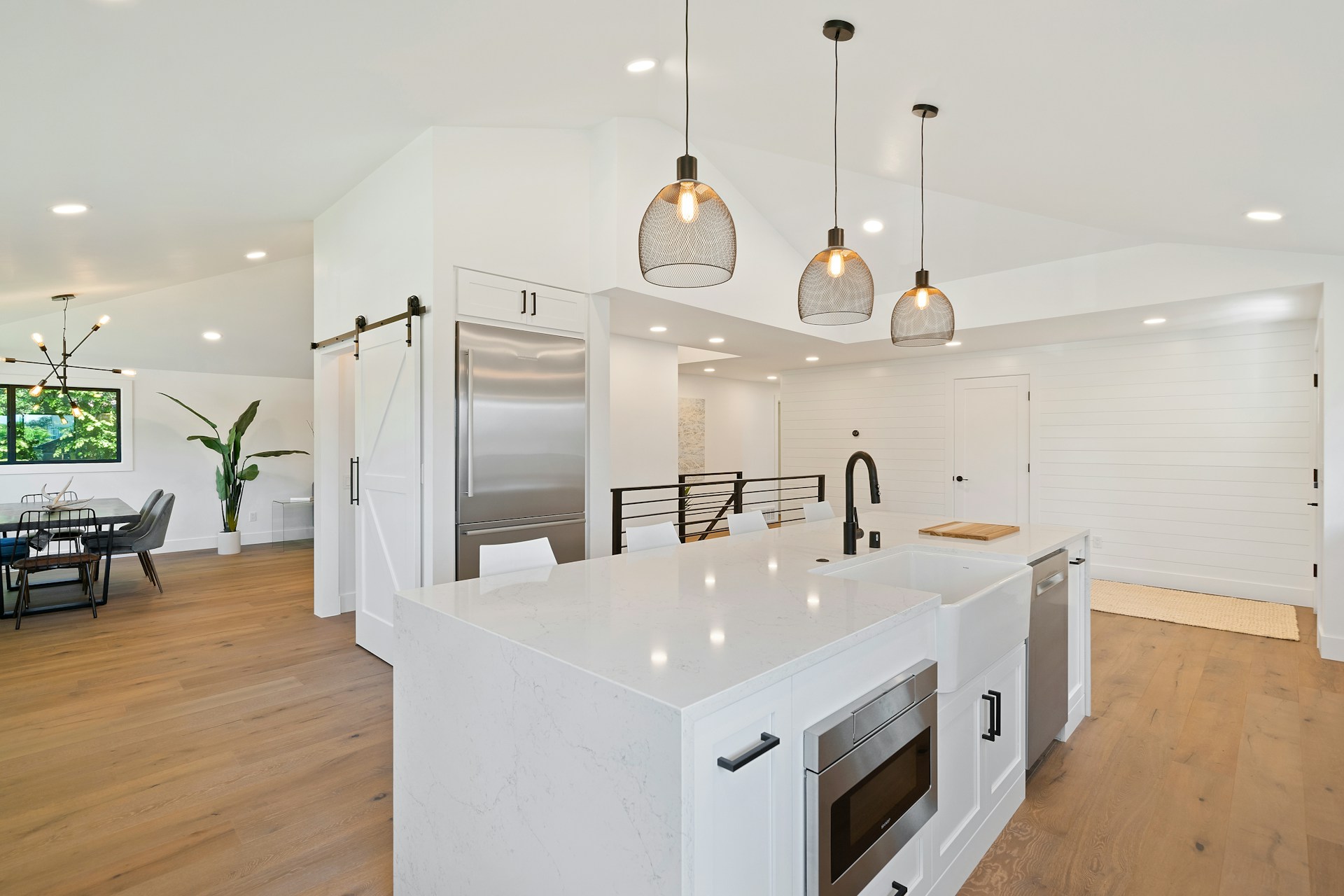Smart homes are becoming increasingly popular. What was previously extremely expensive and hard to implement has been democratized. This has made smart homes much more common.
Today, there is a vast selection of different devices available on the market that are designed to enhance convenience, security, and energy efficiency. This ranges from thermostats and lighting systems to security cameras and voice-activated assistants. In many ways, you could say that smart home devices have revolutionized the way we interact with our living spaces.
As with almost all technological dvices, internet places a central role in facilitating communication to and from devices.
With this said, is it possible to use a smart home without the internet? That’s exactly what we’re going to discuss in this article.
The Role of Internet in Smart Homes
Let’s start with the basics – the mechanisms of connectivity. Smart home devices communicate with each other and with external servers through the internet. This connection facilitates the exchange of data and commands and makes it possible for devices to respond to user inputs and interact with one another in real-time.
With this said, the connectivity in smart homes is a technical necessity and the foundation upon which the benefits of smart living are built.
Remote access is a key advantage of smart homes as it allows you to control and monitor your home from virtually anywhere in the world. This may include things like adjusting the thermostat while you are at work or checking the security camera when you are on vacation. As you can understand, the Internet is crucial for all of these tasks.
In addition, smart home technology relies on the internet’s ability to facilitate communication between devices. This may include tasks like making lighting changes to intelligent thermostatic adjustments based on occupancy patterns. Regardless of the task, the internet is used for this automation.
Many of the features that are key to smart homes are reliant on good internet connection. One such example is voice commands that are delivered to virtual assistants, such as Amazon’s Alexa or Google Assistant. This technology relies on cloud processing to interpret and execute commands. Other features, connected to the integration with external services, like weather updates or calendar synchronization, are also all reliant on internet access.
Challenges of Operating a Smart Home Without Internet
As you can understand, operating a smart home without internet connection is quite difficuklt.
Since smart devices often communicate with each other and external servers through the cloud, the internet is key for these tasks. If you don’t have internet access, the flow of information to and from the cloud is disrupted, thereby limiting the ability of devices to function cohesively.
Cloud dependency is obviously impossible for offline smart homes since the centralized processing and storage of data in remote servers are integral to the real-time responsiveness and coordination that we need in smart devices. Without a constant connection to the cloud, the whole concept of smart home convenience and automation is compromised.
Limited Functionality and Control Without Internet Access
Smart homes are designed to offer a spectrum of functionalities that extend beyond basic manual control. This can include things like setting automation routines to receiving real-time notifications about the status of devices. Either way, the internet is crucial for all of these advanced features. Without an internet connection, it becomes virtually impossible to execute. Smart homes would have to rely on basic manual controls which thereby remove a lot of the sophistication that define the modern smart living experience. Not being able to access devices remotely, receive timely updates, or benefit from cloud-based enhancements all make your smart home considerably less.. smart. One could ask oneself if it’s even a smart home without an internet connection that facilitates all of the functions that are the core of a smart home.
Offline Smart Home Technologies
Whilst smart home technology relies on the internet to a very great extent, there are certainly exceptions. This is because there are devices that can operate independently of the internet. These devices focus on local communication and processing instead of cloud-based interactions.
Some examples of offline-capable devices include standalone smart thermostats, traditional smart locks with local controls, and locally managed lighting systems. These devices are designed to function autonomously and instead of the internet, rely on local networks and embedded processing capabilities to perform their tasks.
Examples of Offline-Capable Smart Home Systems
Local Hubs and Controllers: Some smart home ecosystems are designed with local hubs or controllers that enable communication between devices without having to rely on external servers. These hubs operate as intermediaries which enable devices to interact with each other directly within a local network instead of having to rely on the internet. Zigbee or Z-Wave hubs make communication between compatible devices without internet involvement possible.
Offline Smart Lighting Systems: Some smart lighting solutions can operate independently without requiring internet connectivity. These systems use local controls, such as physical switches or dedicated smart home remotes, to manage lighting scenes and configurations.
Standalone Smart Appliances: Some smart appliances like refrigerators or ovens have local control interfaces. They may offer internet connectivity for additional features but their core functionalities can often be accessed and operated offline.
Pros and Cons of Using Offline Smart Home Technologies
Pros:
- Increased Privacy: Offline smart home devices may mitigate privacy concerns associated with constant data transmission to cloud servers. This is because hacker attacks and similar obviously rely on the internet.
- Reduced Latency: Local communication often results in quicker response times which enhance the real-time control of smart devices.
- Less Dependency on External Services: Users have more control over their smart home experience with fewer dependencies on external services and servers.
Cons:
- Limited Remote Access: Remote access to smart home devices is significantly curtailed without internet connectivity.
- Reduced Automation: The absence of cloud-based processing limits the complexity of automation routines that can be implemented.
- Potential Compatibility Issues: Offline devices may face compatibility challenges when integrating with a broader spectrum of smart home technologies that rely on the internet.
DIY Solutions for an Internet-Free Smart Home
Local Hubs and Controllers
It’s a good idea to invest in local hubs or controllers that enable communication between smart home devices within a localized network. Zigbee and Z-Wave hubs allow for direct device-to-device communication without the need for an internet connection. This approach establishes a self-contained ecosystem that offers a degree of autonomy for your smart home.
Wi-Fi-Enabled Local Network
Traditional smart home devices often rely on cloud services and some can function within a local Wi-Fi network. Look for devices that support local control via Wi-Fi as it allows them to communicate directly with a central hub or each other without external internet involvement.
Local Automation Platforms
Local automation platforms make it possible to create custom routines and automation without having to rely on cloud services. Home Assistant and openHAB are two examples of platforms that can run on local servers which provides the ability to orchestrate smart home devices without internet dependency.
Smart Home Protocols
Choose smart home protocols that prioritize local communication. For example, you want to get devices that support MQTT (Message Queuing Telemetry Transport) for efficient and secure communication between devices on a local network.
Voice Control Without the Cloud
If you want voice control in your smart home, there are some solutions that allow for offline voice recognition. Some platforms have local voice processing capabilities which means that you can control your smart devices using voice commands without having to rely on cloud-based services.
Prioritize Localized Devices
When you’re choosing smart home devices, it’s recommended to choose those that are explicitly designed for local control. You want to look for devices that support offline operation or have local processing capabilities so that you have functionality in the absence of internet connectivity.
Regularly Update Firmware Locally
Cloud-based automatic updates may not be available without internet access and for that reason, you need to make it a habit to manually update the firmware of your smart devices through local means. This is a different approach that ensures they are up to date.
Balance Autonomy and Convenience
If you really want a smart home but don’t have access to internet, you need to be aware of the fact that there is a trade-off between autonomy and convenience. With that in mind, you should consider what is most important to you and find a balance whilst considering factors such as remote access, automation complexity, and device compatibility.
Future Trends and Developments
Edge Computing in Smart Homes: Edge computing capabilities continue to advance and with that in mind, smart homes may witness a shift towards local processing. Edge devices are equipped with robust computing power and can perform data processing tasks locally. This reduces the need for constant internet connectivity.
Mesh Networks for Device Communication: Devices communicate directly with each other with mesh networks, These are becoming increasingly popular as an alternative to centralized cloud communication. In the future, smart home devices will likely rely on mesh networking protocols to a greater extent. This ultimately allows them to form decentralized communication networks within a home.
On-Device AI and Machine Learning: AI is playing a greater role in virtually all aspects of technology – including smart homes. This is a trend that will certainly continue to grow in the future. Both artificial intelligence (AI) and machine learning (ML) capabilities will become standard in many smart home devices and will certainly revolutionize how smart devices operate in many different ways. Many devices will likely leverage AI to analyze data locally instead of relying on cloud-based processing in the future. This can ultimately offer quicker responses and also reduce the need for continuous internet connectivity.
Local Storage Solutions: It’s safe to say that smart home devices will have larger local storage capacities in the future which allows them to store and retrieve data without relying on external servers. This has many benefits, such as enhancing privacy and security by minimizing the amount of data transmitted over the internet.
Standardization of Offline Protocols: Last but not least, many companies in the smart home industry are recognizing the demand for offline-capable smart home solutions. As a result, we’ll likely see growing efforts to standardize protocols that support local communication and control. This will be a great addition to the world of smart home devices as it will mean that devices can operate without constant internet connectivity.

